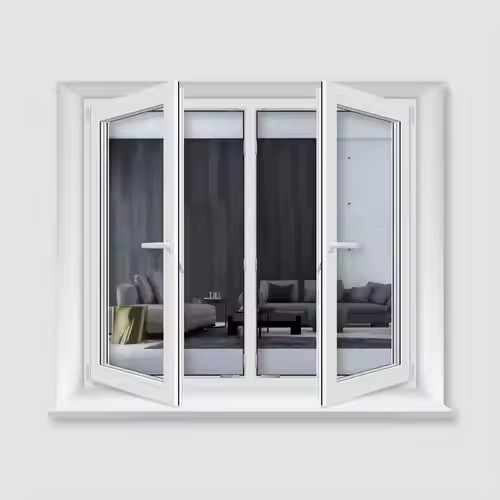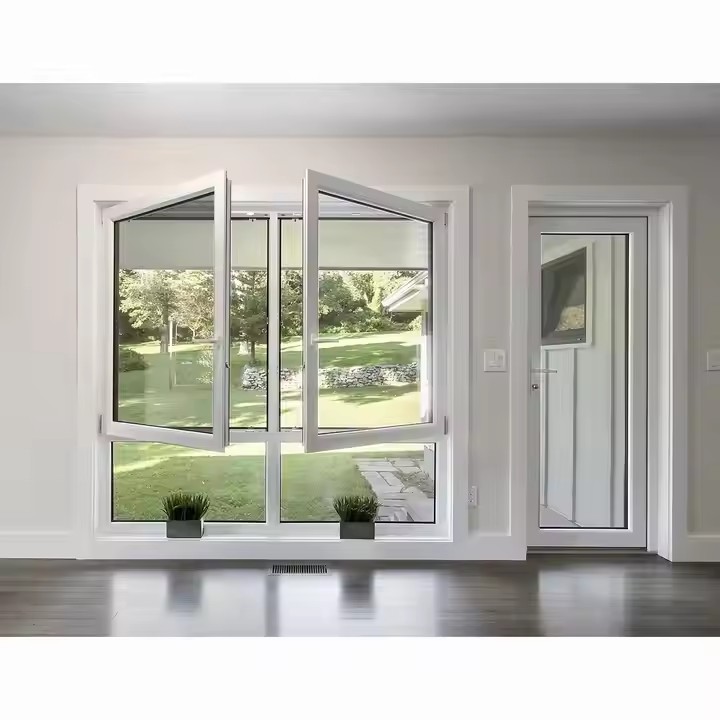I. Fundamental Principles and Core Structure of Thermal Break Windows
- Heat Transfer Mechanism and Targeted Breakthroughs of Thermal Break Technology
Heat is transferred in buildings primarily through conduction, convection, and radiation. Traditional aluminum windows, due to the high thermal conductivity of metal, are major channels for energy loss in buildings. In winter, indoor heat escapes rapidly through the window frame; in summer, outdoor heat easily enters the interior.
The core of thermal break technology lies in embedding low-conductivity insulating materials within aluminum profiles, creating a physical break between the inner and outer sections. This structure blocks direct thermal conduction through the metal. This “sandwich” design significantly reduces the overall thermal conductivity of the frame — for example, 60-series thermal break aluminum profiles can have a thermal conductivity of less than 2.8W/(m·K), which is over 80% lower than traditional aluminum. With the added insulation, even in extreme heat, outdoor temperatures cannot easily affect the indoor space, helping to maintain a stable indoor environment.
- Multi-Dimensional Optimization of Profile Structures
Chambered Profile Design:
Modern thermal break aluminum profiles often adopt multi-chambered structures. Increasing the number of internal air chambers leverages air’s low thermal conductivity when static to create multiple layers of insulation. For example, profiles may include separate chambers for insulation, drainage, and reinforcement, with insulating strips between each. Tests show that a five-chamber profile can reduce heat transfer by 15–20% compared to a single-chamber design.

Wall Thickness and Material Reinforcement:
According to national standards, thermal break aluminum profiles should have a minimum wall thickness of 1.4mm. However, premium products typically use wall thicknesses of 1.8–2.0mm to increase thermal resistance. Some manufacturers use composite materials, embedding glass fiber-reinforced nylon into aluminum bases or applying fluorocarbon coatings to enhance insulation and durability.
II. Integration of Insulation Technologies in Glass Systems
- Scientific Selection and Combination of Glass Types
Insulated Glass Units (IGUs):
IGUs use dry air layers (6–20mm thick) between two or more glass panes to reduce heat transfer. A thicker air layer generally improves insulation, but beyond 12mm, returns diminish. 12mm and 16mm are commonly used. Some IGUs are filled with inert gases for better performance.
Low-E Glass:
Low-emissivity (Low-E) glass is coated with multiple metallic layers (e.g., silver, copper, tin) using magnetron sputtering. It reflects far-infrared radiation (which carries heat) while maintaining visible light transmission. Single-silver Low-E IGUs can reach thermal transmittance as low as 1.8W/(m²·K), while double-silver versions can go below 1.3W/(m²·K). In summer, they reflect external heat; in winter, they retain indoor warmth — achieving dual-direction thermal insulation.
Triple-Glazed and Vacuum Glass (Advanced Options):
Triple glazing adds more glass and air layers, improving insulation further, with transmittance as low as 1.5W/(m²·K), but increases weight and cost. Vacuum glass eliminates the air between two panes (vacuum ≤0.1Pa), reducing conduction and convection almost entirely, with transmittance as low as 0.5W/(m²·K). However, its vacuum may degrade over time, so it’s mostly used in high-end buildings.
- Optimized Edge Sealing Systems
Sealing strips (e.g., EPDM rubber) between the glass and frames are crucial for overall insulation. Replacing traditional aluminum spacers with “warm-edge” spacers (e.g., stainless steel or composite plastic, with conductivity <0.1W/(m·K)) minimizes edge thermal bridging. For example, TGI warm-edge spacers can reduce edge heat transfer by 30% and improve overall U-value by approximately 0.2W/(m²·K).
III. Coordinated Optimization of Hardware and Sealing Systems

- Technological Innovation in Thermal Hardware Components
Traditional aluminum hardware (like hinges and lock points) can create thermal bridges. Modern systems use insulating nylon blocks or stainless-steel hardware to block heat transfer. For example, HOPPE (Germany) offers thermal handles with PA66 nylon cores that reduce handle heat transfer to under 2.0W/(m·K).
Multi-point locking systems (with 4–8 locking points) enhance window and sash sealing, significantly reducing heat loss due to air infiltration. Tests show that multi-point lock windows reduce air leakage by 60%–80% compared to single-point locks.
- Multi-Layer Sealing Strip Design
Three-Layer Sealing Structure:
High-end thermal break windows often feature triple-seal designs:
The first seal (inner side of sash) blocks dust and micro-airflow.
The second seal (middle) forms a pressure-equalizing chamber to balance internal and external air pressures.
The third seal (outer) resists rain and wind.
For instance, TROX’s ProfiPlus system uses triple-chambered strips with serrated designs to achieve air permeability rating of Class 8 (GB/T 7107-2019), reducing U-values by 0.3–0.5W/(m²·K).
Seal Material and Compression Ratio Control:
Use composite foam strips (e.g., EPDM + PU foam) with >95% closed-cell structure and thermal conductivity <0.035W/(m·K). Keep compression ratio between 20–30% during installation to ensure airtightness without degrading elasticity over time.

